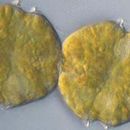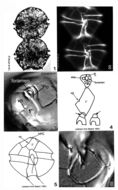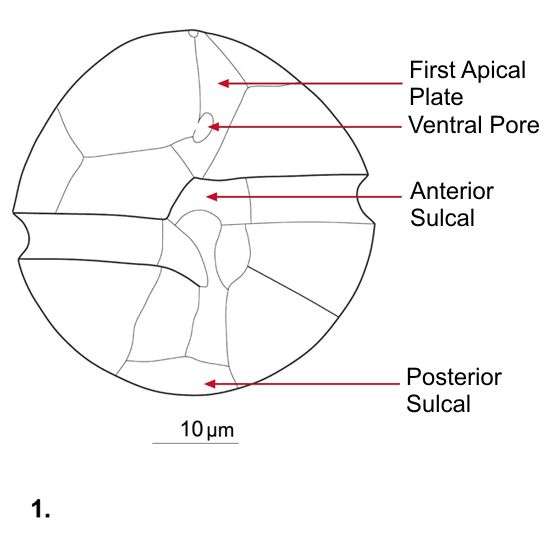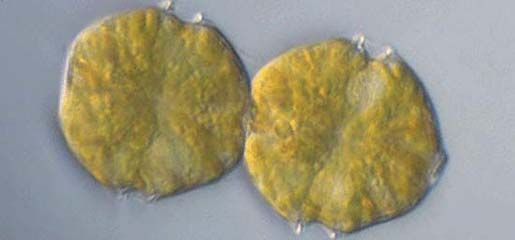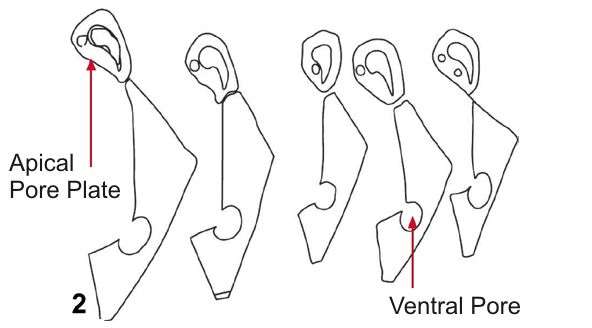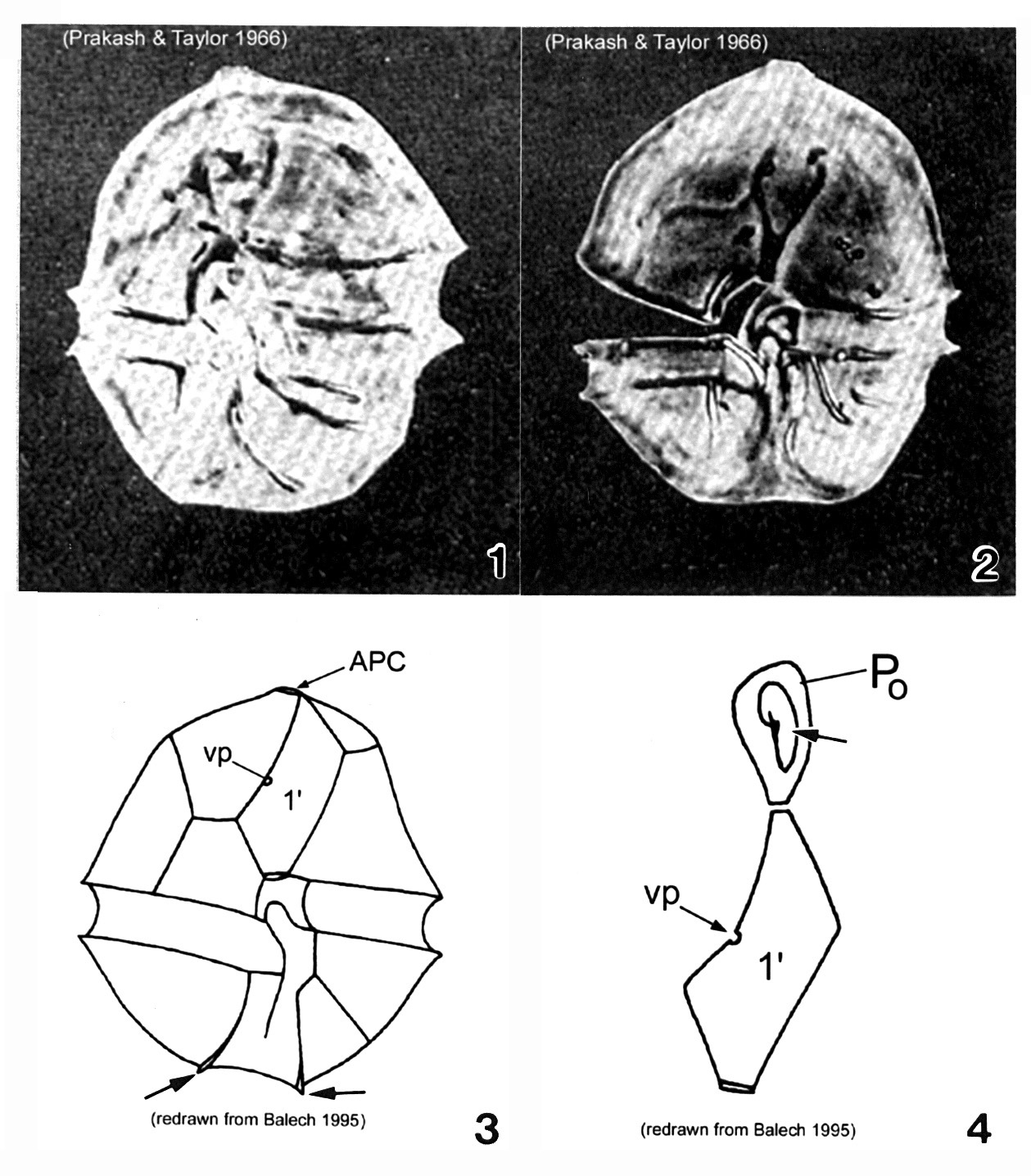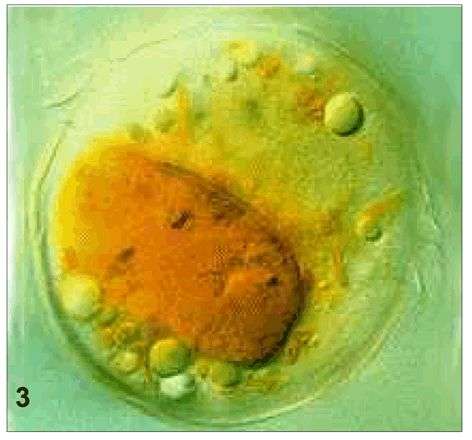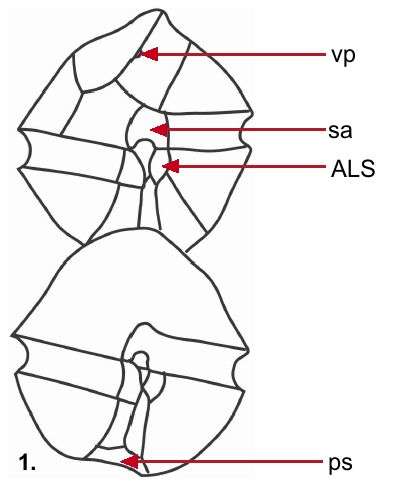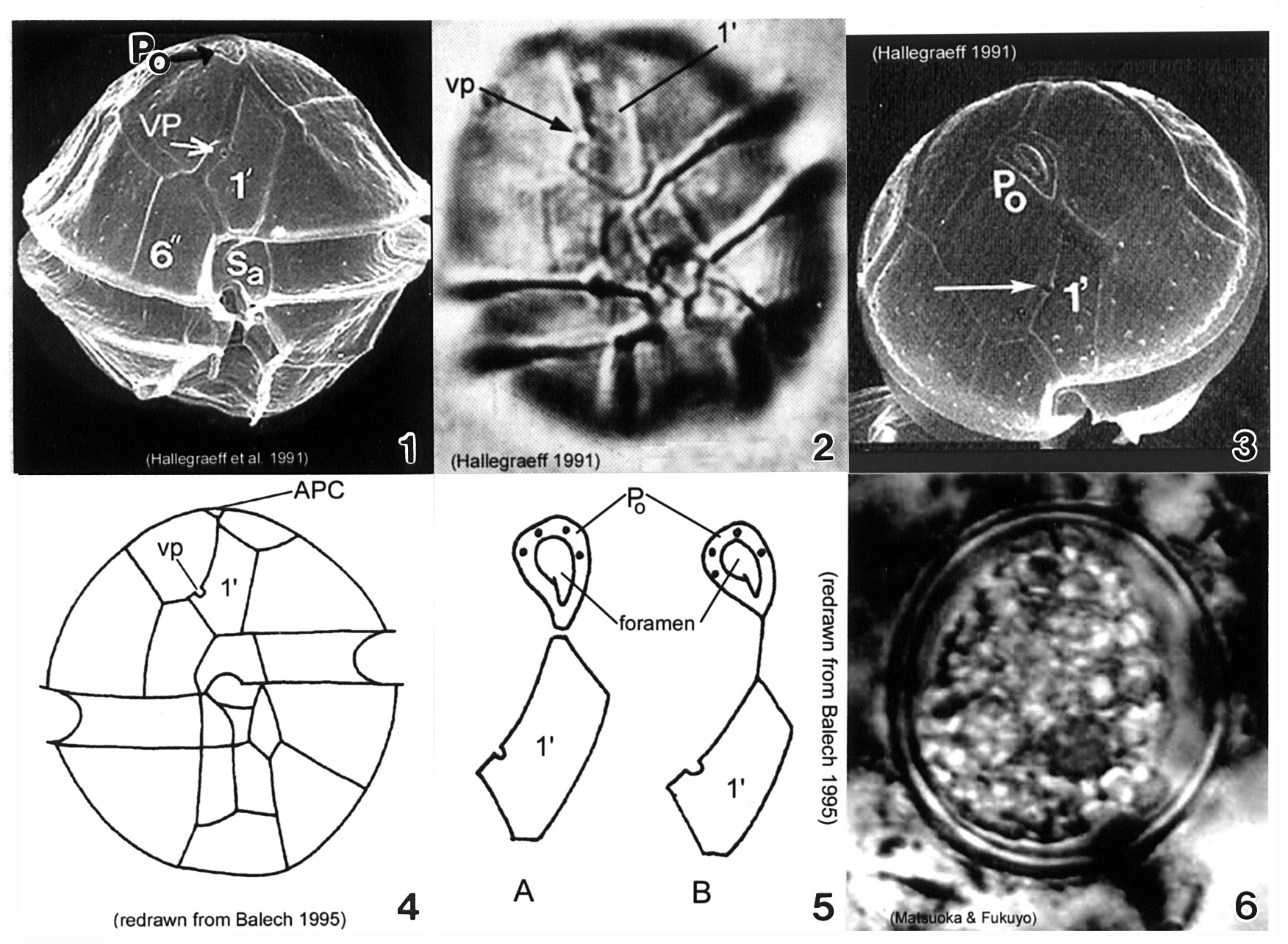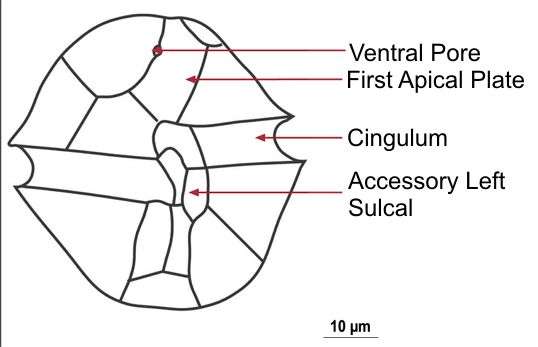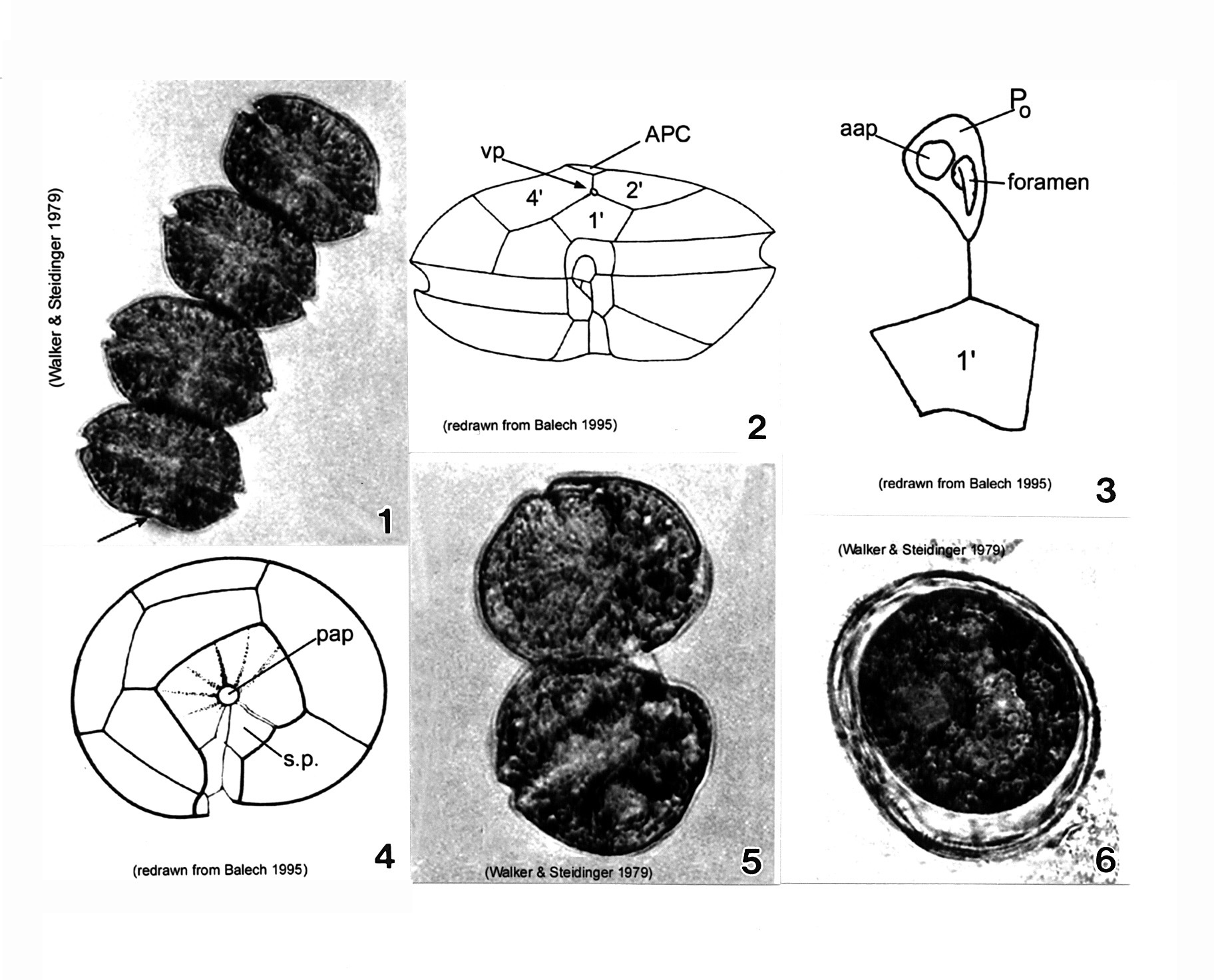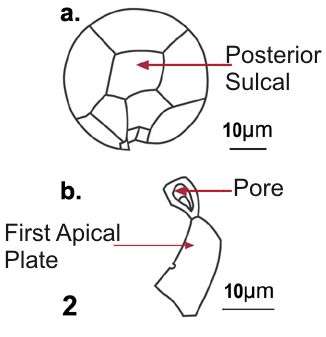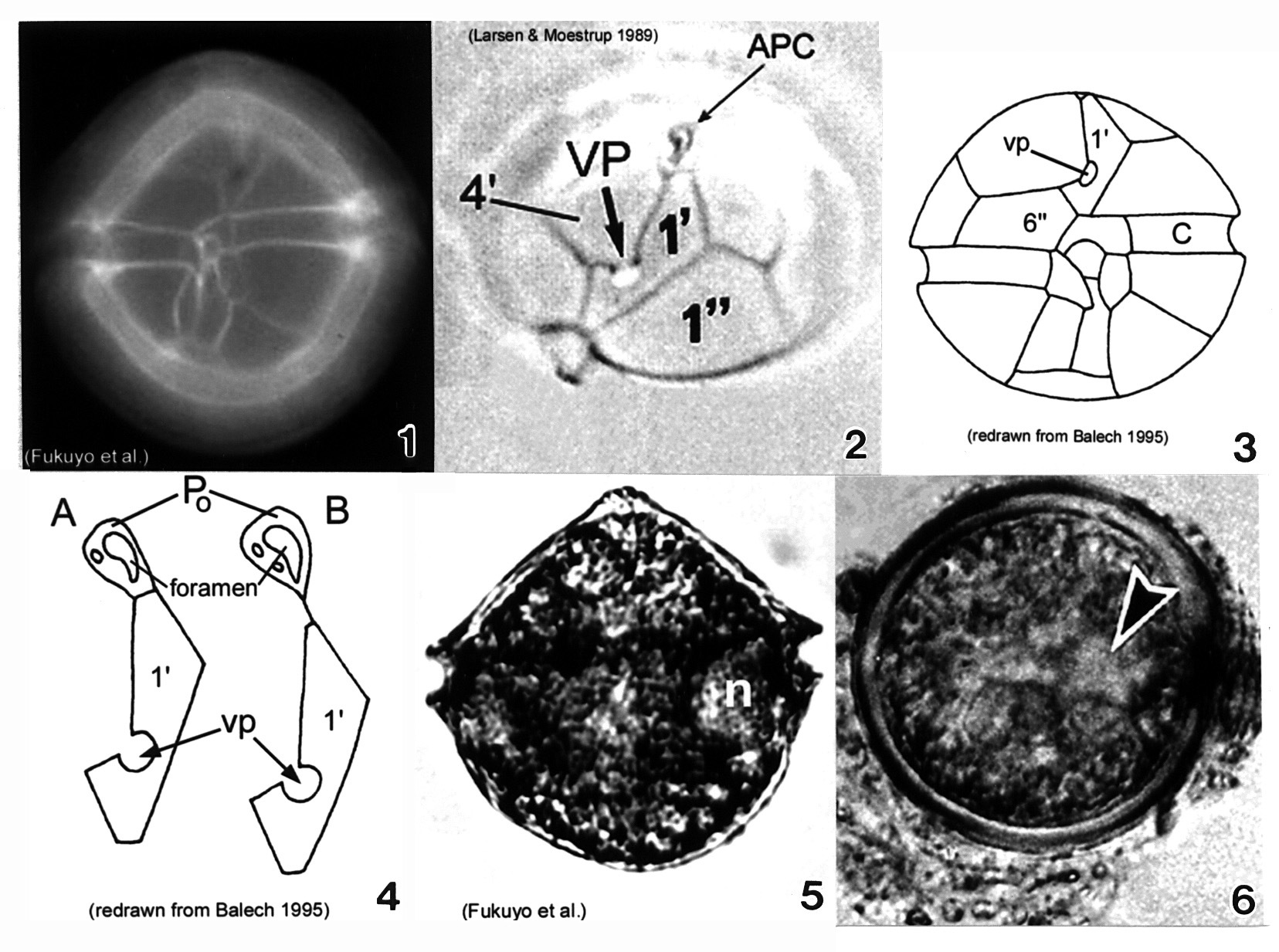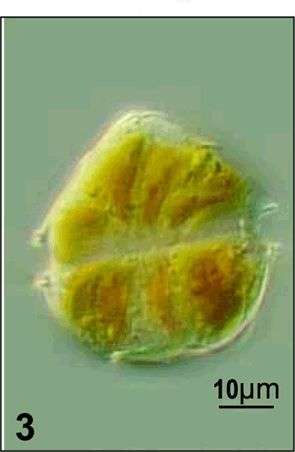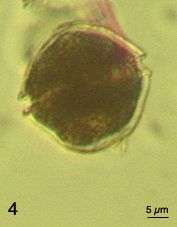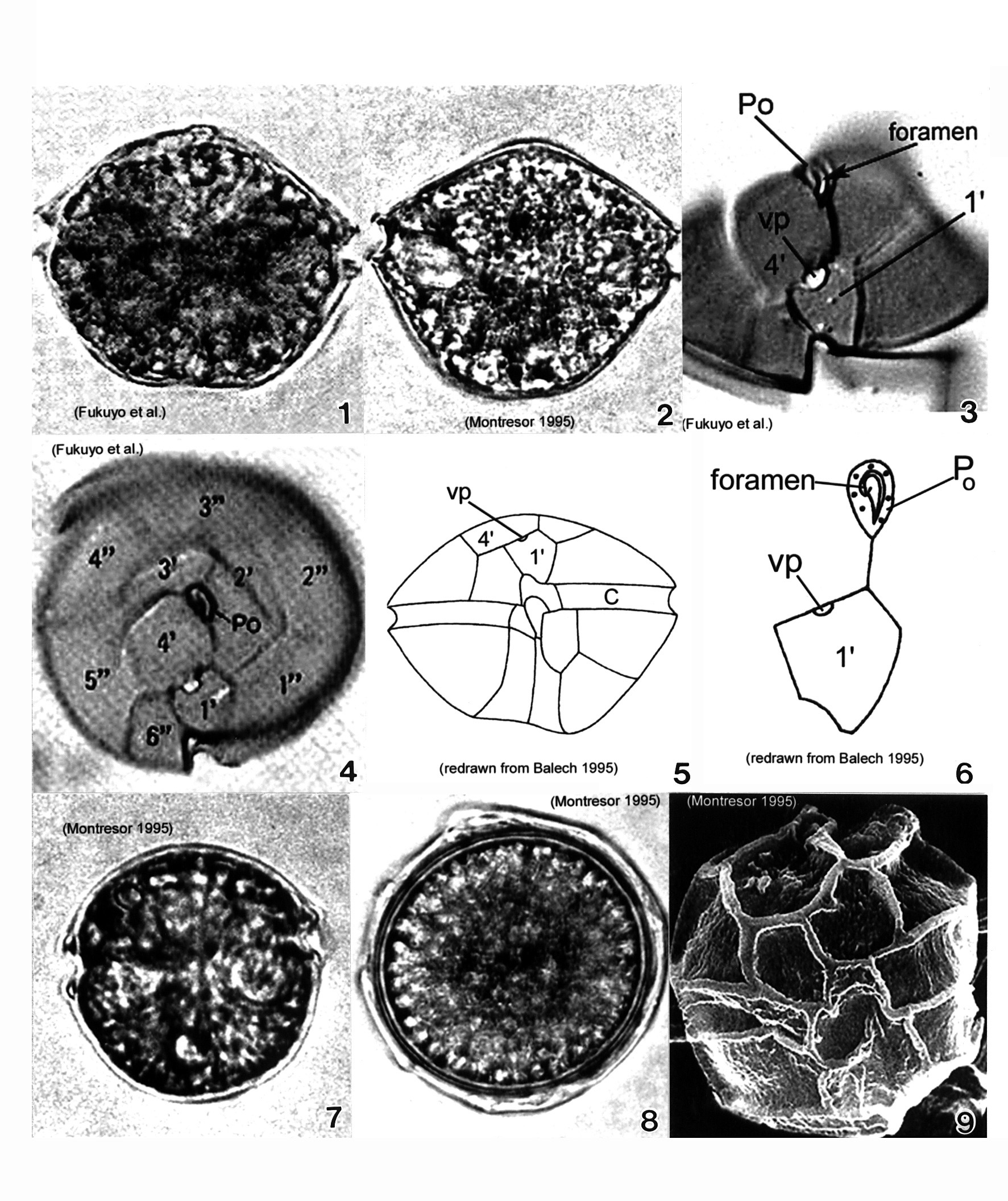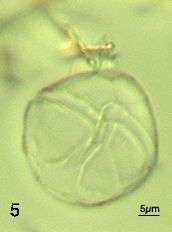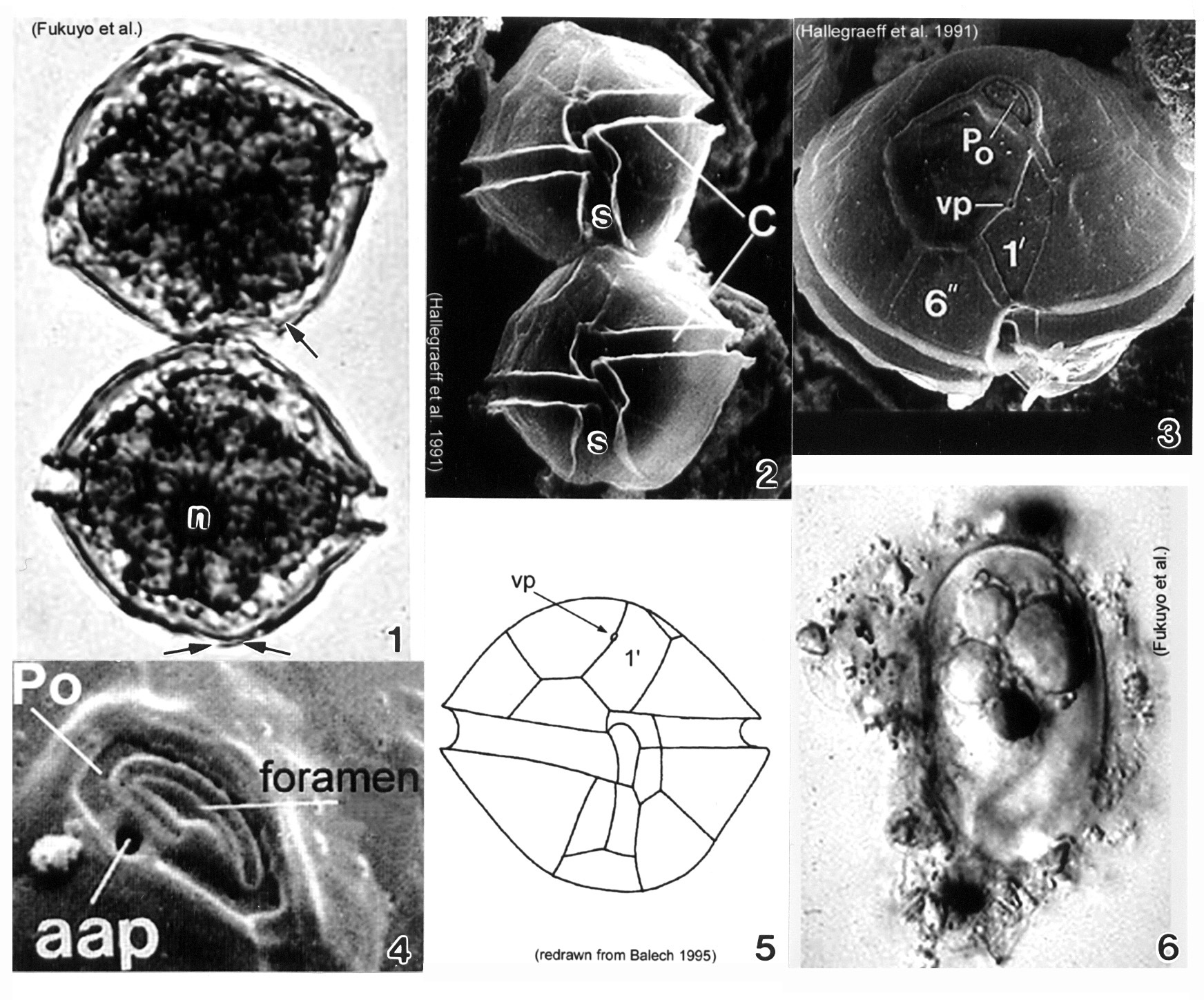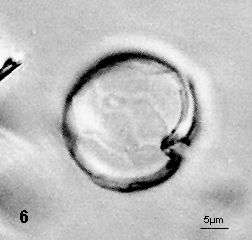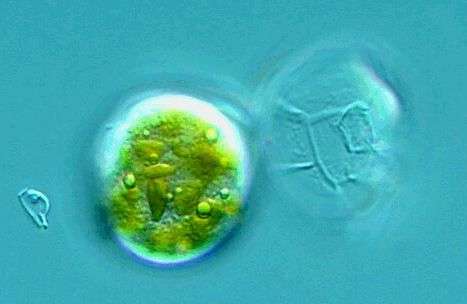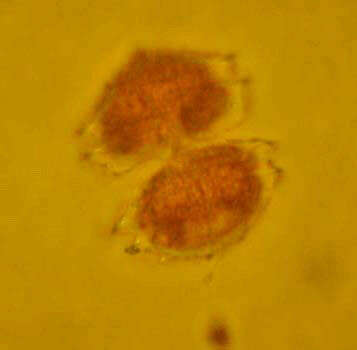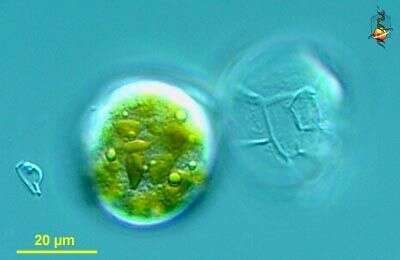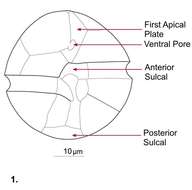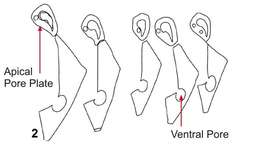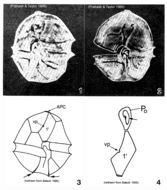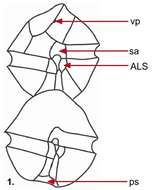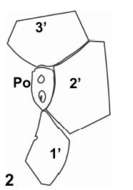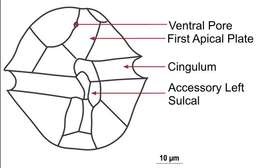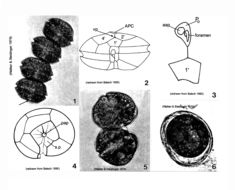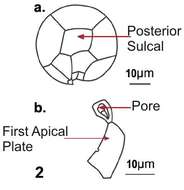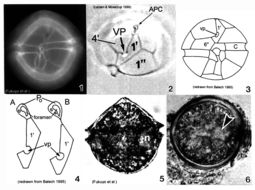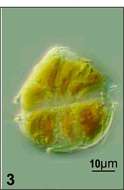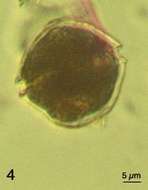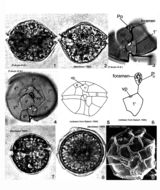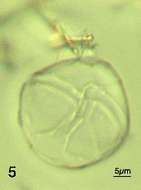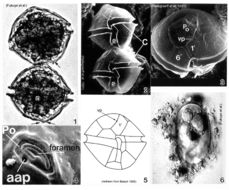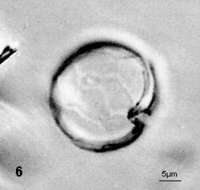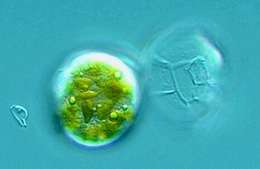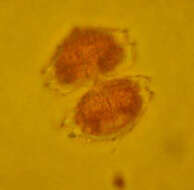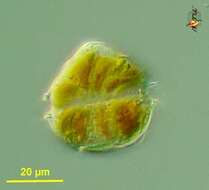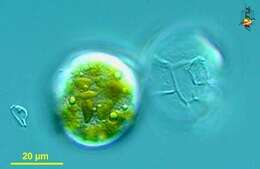-
Fig 1: Alexandrium ostenfeldii Schematic drawing of a cell showing plate patterns on ventral side of cell
-
Uit: www.nies.go.jp/biology/ mcc/strainlist_a.htm
Ecomare
Alexandrium; Alexandrium.
-
Fig 2: Alexandrium ostenfeldii Schematic drawing of a cell showing the morphological variation in APC and 1'
-
Plate 1. Alexandrium acatenella. Figs. 1-2. LM: ventral view of empty thecae. Cell small to medium, longer than wide, angular to round. Conical epitheca with shoulders; larger than hypotheca. Figs. 3-4. Line drawings. Fig. 3. Ventral view: 1' plate bears ventral pore (vp). Hypotheca with two antapical spines (arrows). Fig. 4. Po comes in direct contact with 1' plate. APC: comma-shaped foramen (arrow).
-
Fig 3: Alexandrium ostenfeldii whole cell with food vacuole
-
Fig 1: Schematic diagram of Alexandrium affine, showing ventral (top) and dorsal (bottom) views.
-
Plate 3. Alexandrium minutum. Fig. 1. SEM: ventral view. Cell small and ellipsoidal. Epitheca conical, larger than hypotheca. Hypotheca short and wide; antapex obliquely flattened. Intercalary bands present. Cingulum deep, lipped; displaced 1X its width. Sulcus shallow (sa=anterior sulcal plate). Apical pore plate (Po) in direct contact with 1' plate. Fig. 2. LM: ventral view. Ventral pore (vp) present on 1' plate. Fig. 3. SEM: apical view. Po large, narrow and oval; indirectly connected to 1' plate. Vp present (arrow). Figs. 4-5. Line drawing. Fig. 4. Ventral view. 1' plate slender and rhomboidal. Fig. 5. Po connection to 1' plate: a. direct; b. indirect via thin suture. Fig. 6. LM: cyst circular in apical view.
-
Fig 2: Schematic drawing of the Po and surrounding apical plates
-
Fig 1: Alexandrium tamarense Schematic drawing of a cell showing plate patterns on ventral side of cell
-
Plate 4. Alexandrium monilatum. Fig. 1. LM: four-cell chain. Cells large, wider than long, flattened anterio-posteriorly. Antapex slightly concave (arrow). Figs. 2-4. Line drawings. Fig. 2. Ventral pore (vp) depicted (Florida specimens) at anterior margin of 1' plate where it comes in contact with plates 2' and 4'. Cingulum (C) deeply excavated, wide, descending; displaced one time its width. Fig. 3. Apical pore plate (Po) does not come in contact with 1' plate. Anterior attachment pore (aap) large, round and dorsally situated in the APC. Foramen comma-shaped. Fig. 4. Antapical view: posterior sulcal plate (sp) large, rhomboid and concave with radial markings. Posterior attachment pore (pap) large and centrally located. Figs. 5-6. LM. Fig. 5. Two isogamous gametes fusing at oblique angles. Fig. 6. Mature resting cysts: dark and round, with a triple layered wall.
-
Fig 2: Alexandrium tamarense Schematic drawing of a cell in posterior view and b. apical pore coplex with 1'.
-
Plate 5. Alexandrium ostenfeldii. Figs. 1-3. LM. Fig. 1. Ventral view. Cell large and nearly spherical. Cingulum deeply excavated. Epitheca broad and convex-conical. Hypotheca hemispherical with an obliquely flattened antapex. Fig. 2. Epitheca: apical view. Ventral pore (vp) large and distinct. First apical plate (1') forms a 90 degree angle at the point where vp and 4' plate come in contact. Apical pore complex (APC) with comma-shaped foramen. Figs. 3-4. Line drawings. Fig. 3. Ventral view: 6'' plate wider than high. Cingulum (C) slightly excavated. Fig. 4. APC and 1' plate: a. Po in direct contact with 1'; b. Po in indirect contact with 1' via thin suture. Fig. 5. LM: vegetative cell. Small equatorial nucleus (n). Fig. 6. LM: temporary cyst large and spherical, covered in mucilage. Nucleus visible (arrowhead)(Mackenzie et al. 1996).
-
Fig 3: Alexandrium tamarense Live cell in dorsal view
-
Fig 4: Alexandrium tamarense Lugol's preserved cell
-
Plate 6. Alexandrium pseudogonyaulax. Figs. 1-4. LM. Fig. 1. Ventral view. Cell broadly pentagonal; wider than long. Epitheca short and dome-shaped. Hypotheca longer than epitheca. Cingulum shallow and barely displaced. Fig. 2. Dorsal view. Antapex obliquely concave. Fig. 3. Epitheca: ventral view. Apical pore plate (Po) with comma-shaped foramen. 1' plate pentagonal with large wide ventral pore (vp) on 4' plate margin. Fig. 4. Epitheca: apical view. 1' plate does not come in contact with Po. Po oval and longitudinal on apex. Figs. 5-6. Line drawings. Fig. 6. Po and 1' plate not in contact. Fig. 7. LM: isogamous gametes smaller and rounder than vegetative cells. Fig. 8. LM: round resting cyst. Fig. 9. SEM: paratabulate cyst.
-
Fig 5: Alexandrium tamarense empty theca showing detail of sulal plates
-
Plate 7. Alexandrium tamarense. Fig. 1. LM. Two cell chain: cells small to medium; slightly longer than wide, nearly spherical. Cingulum (C) deeply escavated and lipped. Left hypothcal lobe slightly larger than right. Nucleus (n) visible. Figs. 2-4. SEM. Fig. 2. Two cell chain: cingulum displaced 1X its width. Deep sulcus (s) widens posteriorly. Fig. 3. Epitheca: apical view. Apical pore plate (Po) rectangular; narrows ventrally. Po and first apical plate (1') in direct contact. Small ventral pore present on 1' plate. Fig. 4. Apical pore complex (APC): foramen large and fishhook shaped. Small round anterior attachment pore (aap) present (Hallegraeff 1991). Fig. 5. Line drawing. Fig. 6. LM. Oblong resting cyst with rounded ends, reddish lipid bodies; covered in mucilage.
-
Fig 6: Alexandrium tamarense anterior part of theca showing outline of 1' plate
-
Plate 8. Alexandrium tamiyavanichi. Figs. 1-3. LM. Fig. 1. Two cell chain: cells medium-sized; round to slightly wider than long. Epitheca with shoulders. Fig. 2. Cells stained with calcofluor white: cingulum displaced 1X its width; sulcus widens posteriorly. Fig. 3. Apical view: apical pore plate (Po) houses comma-shaped foramen. First apical plate (1') with ventral pore (vp). Figs. 4-5. Line drawings. Fig. 4. 1' plate in direct contact with Po. Po with large central foramen surrounded by small pores. Anterior sulcal plate (s.a.) invades epitheca; an anterior projection of s.a. fits into a notch in the 1' plate (arrows). Fig. 5. Ventral view: sulcal lists project anteriorly (arrows). Fig. 6. Posterior sulcal plate (s.p.) with round posterior attachment plate (pap) in center (arrow).
-
Fig 7: Image of Alexandrium tamarense
-
-
Alexandrium tamarense (ah-leck-sand-rr-um) is a motile autotrophic dinoflagellate which produces paralytic shellfish poisons (PSP toxins). This image shows plastids, equatorial girdle, a hint of the longitudinal sulcus in the rear of the cell where it passes over the nucleus. Because of the toxicity, correct identification is required, and this needs expert input, which can be obtained from other sites such as
IOC Harmful Algal Bloom Program. Differential interference microscopy.
data on this strain.
-
Alexandrium tamarense (ah-leck-sand-rr-um) is a motile autotrophic dinoflagellate which produces paralytic shellfish poisons. This image shows a cell that has been forced, by coverslip pressure (from the thumb of that butcher Patterson), from its theca, and several thecal plates are visible. Because of the toxicity, correct identification is required, and this needs expert input, which can be obtained from other sites such as
IOC Harmful Algal Bloom Program. Differential interference microscopy.
data on this strain.

